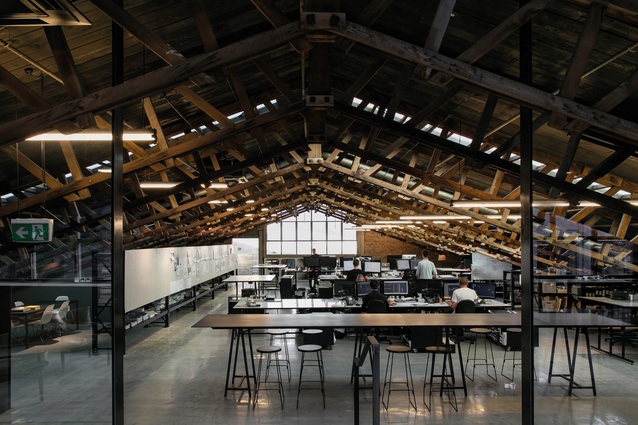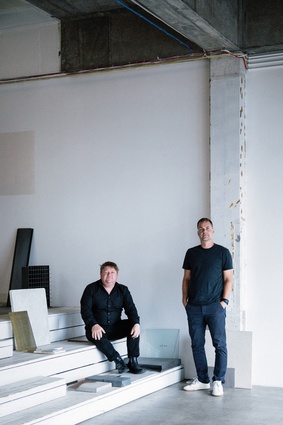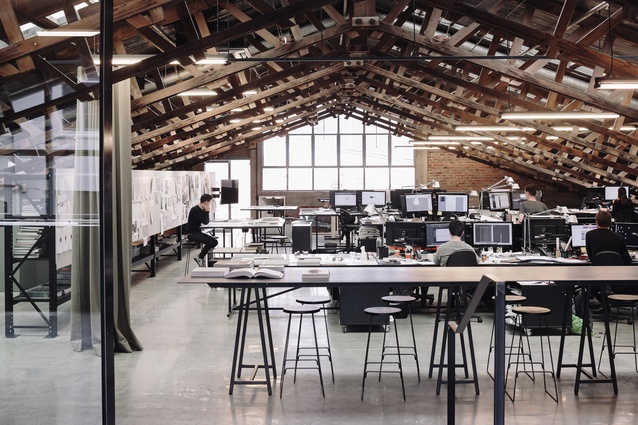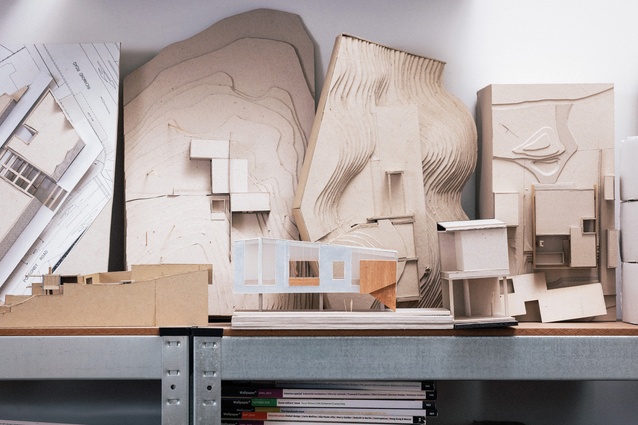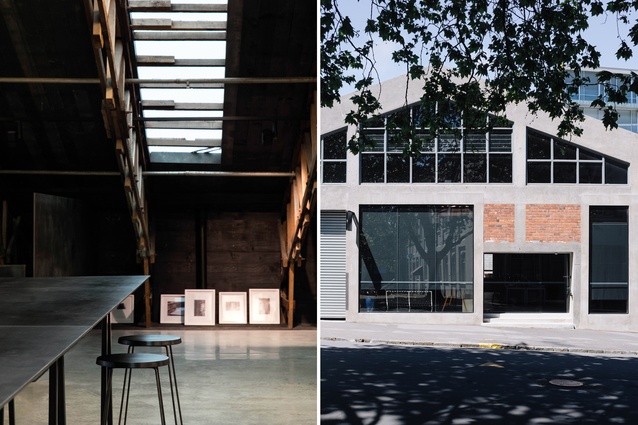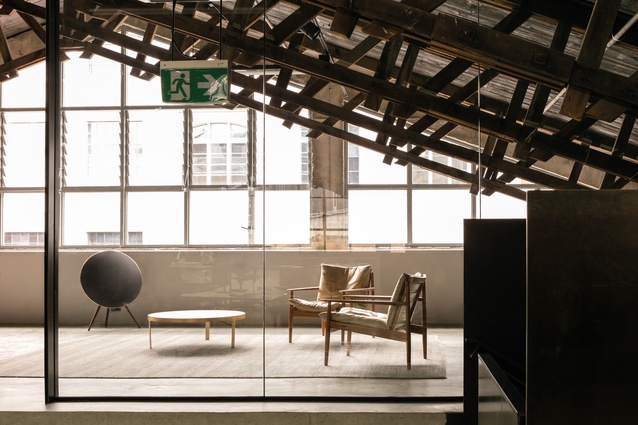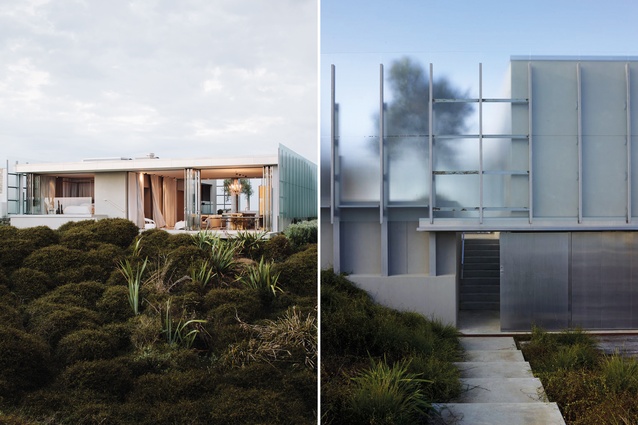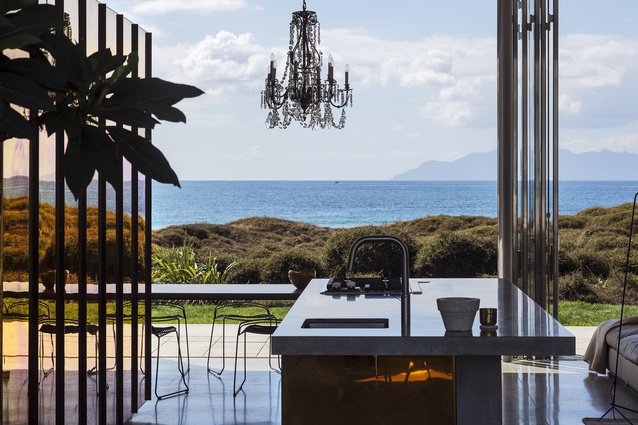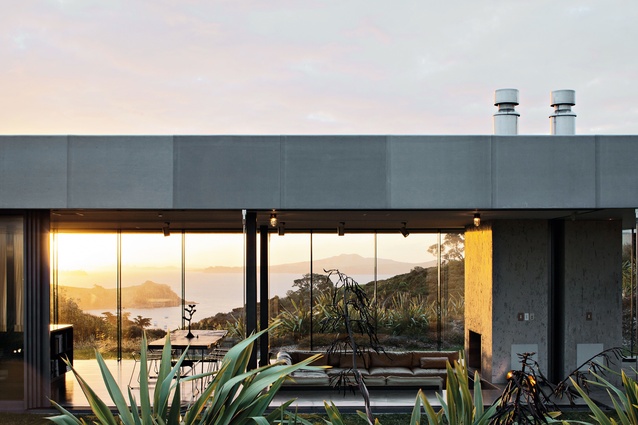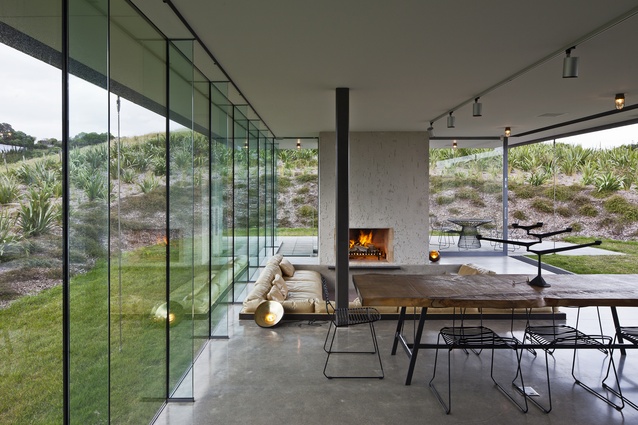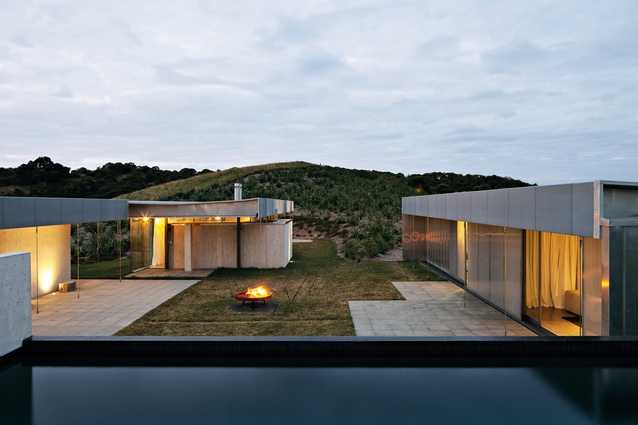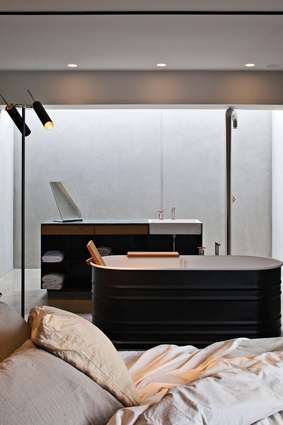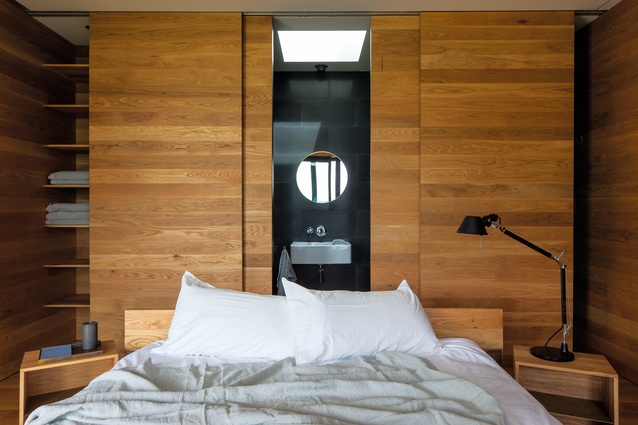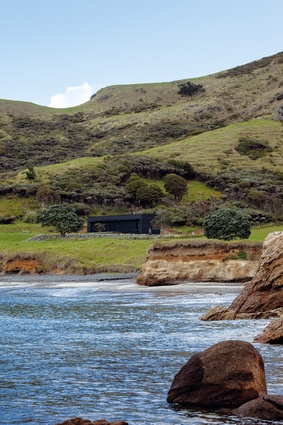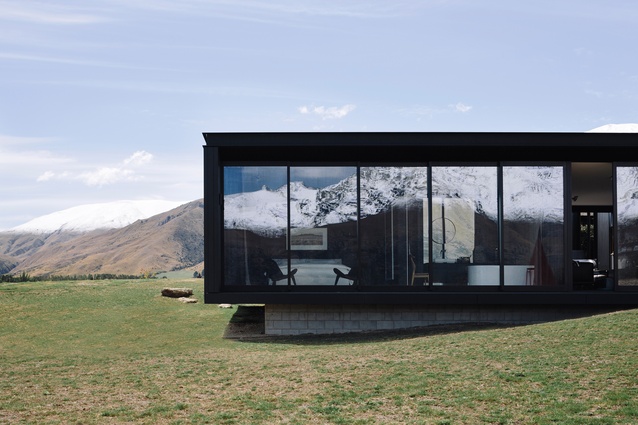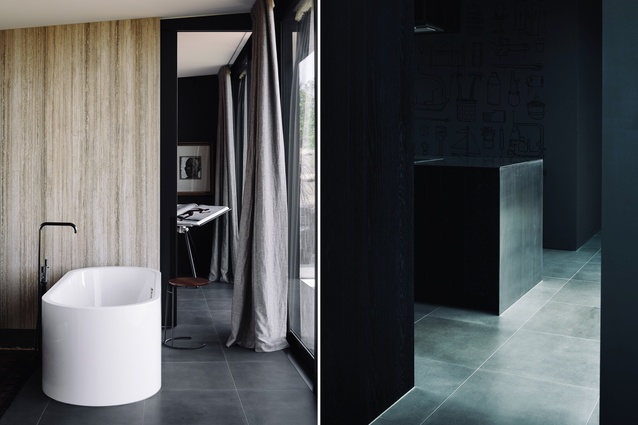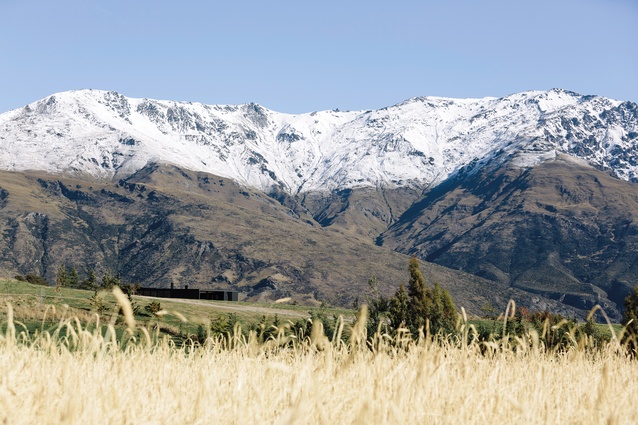Architects in Profile: Fearon Hay Architects
Founded in Auckland just over 20 years ago, this passionate, strong-minded practice is now designing houses as far afield as California, Lisbon and London, as clients from around the world continue to be captivated by its creativity.
Fearon Hay’s portfolio of projects eschews definition – at once fearless, luxurious, grounded and dramatic – and that’s just the way the architects like it.
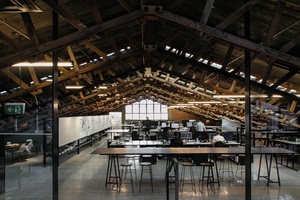
Amanda Harkness (AH): Tell us about how you started out two decades ago, having worked in a well-known practice together.
Tim Hay (TH): Back in 1998, we had the great fortune to have three projects that gave us the confidence to launch the practice: a renovation in Bayswater for Sir Peter Blake, a house up in the Bay of Islands and the Coromandel Beach House. The Bay of Islands project won an award, so that provided a marketing opportunity for us as a young practice, and then we had the Coromandel one photographed and published.
Jeff Fearon (JF): After that, we designed a house on the lake in Queenstown for clients who had stayed in the Bay of Islands house. They invited us down one weekend and we started a conversation, which led to the commission.
AH: What were your early influences?
TH: We were fascinated by what was happening around the world and what was being recorded in the Spanish periodical El Croquis. We still read it. It profiles specific architects and collections of work and we have a real respect for and an interest in what those architects have done.

JF: The other thing we like doing is travelling, both together and individually, and that’s increased now we’re working in different countries. We’ve also entered the World Architecture Festival several times and enjoyed some success there. That’s meant that we’ve been competing with our work internationally but we’ve also been in conversation with people internationally about our work. So, I don’t know if it’s a particular influence but we’re very interested in what’s happening around the world.
AH: When you began, was there a conscious style you were promoting?
TH: No and that’s still the case. We’re constantly trying to develop and learn. We want to push ourselves to try new things in terms of form and response. And I think that probably speaks to the partnership and how Jeff and I work together. We push each other; we challenge each other – and, if either of us starts to become a little bit complacent or does something that feels too easy or too familiar, we question each other.
JF: That is, I think, the success of our design partnership, in that we’re trying to progress and explore. And that’s exciting and it’s a lot of hard work as well because there isn’t a groove that we’ve settled into and kept going on.
AH: How would you describe your work?
TH: If you looked at our Forest House, and then to The Cloak, to the hotel in Taiwan, to some of the work that we’re doing in Los Angeles, it’s really diverse and we love that.
In one breath, we say it feels like it’s from many different hands and yet there are still things that make it our work as well. It’s hard to quantify what binds the projects – there’s perhaps a certain sense of planning or order but it’s difficult to pinpoint.
AH: Do you have any particular materials or construction techniques that you favour?

TH: No, we like to have a diverse tool kit. We love raw, natural materials and that’s probably fairly consistent throughout our work. But, one building might be about timber and another might have no timber. Another might be about concrete and, other ones, a collision of different materials. It’s very much about the themes and the story that the building is following and how to let materials amplify and clarify those things.
JF: And another thing that we love doing is adapting buildings – seeing those opportunities in finding old structures and interfacing with them and giving them a new life.
AH: With your interiors, do you work with particular designers or does the client sometimes bring a designer to the project?
TH: There are some projects where we want to maintain complete control and see it through. There are others where we collaborate with designers from here in New Zealand and overseas. We’re very open to those and not just through interiors but also through landscape and art. We love finding like-minded people who have strong voices.
JF: And there are projects where some clients come with nothing and others come with a lot. And we navigate that. We always speak our minds but, at the end of the day, while we’re providing guidance and opportunity for how they might live, it’s their home and it needs to be their own.
AH: Do your overseas projects make up a large part of the business?
JF: More and more. We did our first project in New York 15 years ago and then one in San Francisco more recently; and now, with the LA office, there are three houses in California that we’re currently working on. And more in Hong Kong, Australia and Taiwan.
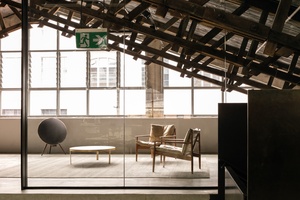
TH: Although we love being based in Auckland, it’s an international practice and that audience is exciting. In LA, we’re considered ‘exotic’ because we’re from New Zealand and that seems to have a certain charm to them. But it’s about our work. Many of our clients in the States have seen our work over the years and then, when they found out that we were opening an office in LA, they said: “That’s easy; we’ll work with you”.
AH: How would you describe your ideal client?
TH: Strong-minded, passionate, collaborative. We want a client that has a very strong point of view and one that will challenge us. In the past, when we’ve developed an idea for a client and put it in front of them and they’ve said, “Great, love it, let’s build it”, we wonder whether they’ve got the best of us, whether they’ve pushed us enough, whether there’s an exchange that needs to happen to test whether we actually have done that. We enjoy active clients who participate quite strongly in a collaborative process to discover something new. For us to develop professionally, we want clients who push us and suggest things that might not be conventional.
AH: How do you see the future for Fearon Hay in terms of residential work?
TH: Location is the biggest variant. We’re working in Australia, we’re working on several different typologies within California and in other parts of the States, we’re doing a big house in the UK and we’re in early discussions in Portugal. So, the future is looking pretty exciting.
***
Dune House

Set among the dunes of a popular beach on the east coast of the North Island, Dune House responds to the opportunities of a coastal lifestyle but reflects the need for privacy from an adjacent property.
A central, open-plan living space sits between a terrace and a protected courtyard, offering pool, outdoor dining and open fire. The terrace opens to the beach and ocean while the courtyard creates privacy and provides a sense of sanctuary. This protection is created by a bespoke steel-and-glass veil, obscuring views into the space but maintaining awareness of afternoon light and the setting sun.
The project was completed in 2013, and the team of Robin Gieselhardt and Stephen de Vrij was accompanied by Tim Hay and Jeff Fearon as the design architects. The interiors were created in collaboration with Penny Hay.
The house won a World Architecture Award in 2014, was a finalist for the New Zealand Architectural Medal in 2014 and was the winner of a New Zealand Architecture Award in 2014.
Island Retreat

This family retreat, set in a saddle above Matiatia Bay on Waiheke Island, is an arrangement of free-standing structures around a courtyard.
While the site is idyllic, it is also exposed, so the saddle has been subtly emphasised to form a protective setting for the three structures, a pool and the open spaces between.
The architecture draws from the principles of a camp, with individual roof planes covering each structure; together these structures house approximately 375m2 of living, sleeping and studio spaces. These draped planes are tensioned over rough concrete forms embedded in the contour.
The house can perform off the grid, with rainwater harvesting, wastewater treatment and solar energy generation all provided on site.
The project was completed in 2011, and the team was made up of Stephen de Vrij and Robin Gieselhardt, with Tim Hay and Jeff Fearon as the design architects. The interiors were created in collaboration with Penny Hay.
The house won a New Zealand Architecture Award in 2011, was published in Elle Decoration UK in September 2012 and was a finalist in the World Architecture Awards in 2012.
Storm Cottage
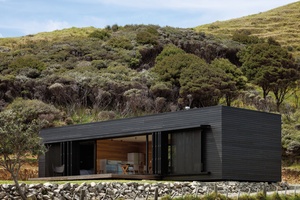
Located on the east coast of Great Barrier Island, this 100m2 black, rough-sawn-timber box faces the sea.
It sits on a property with another Fearon Hay-designed house – the Shark Alley House – which was completed three years earlier. As the home-owners’ family grew, another building was needed but it is almost as though they are on separate sites, with neither being seen by the other.
Storm Cottage is designed as a simple, contemporary cabin, in contrast to the strong architectural presence of the Shark Alley House. A quieter building visually, it sits close to the hillside, while still offering beautiful water views.
A bedroom and adjoining en suite is set at each side of a central living space, with oiled oak boards used for both the internal walls and the floors. The dark exterior palette includes a layer of perforated metal screens.
The building is off the grid, powered by solar panels with independent systems for water collection and treatment. This is a retreat that provides shelter, warmth and comfort within the wildness of its remote setting.
Construction of Storm Cottage was completed in 2012 by a project team made up of Robin Gieselhardt, Tim Hay and Jeff Fearon. Interiors were designed in collaboration with Penny Hay.
Alpine Terrace House
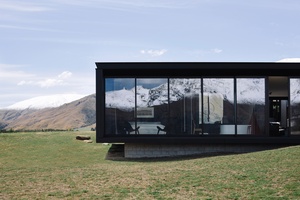
This house is a low-profiled retreat perched in the open landscape.Made up of a cluster of simple, blackened buildings, it is sited on a sloping terrace and surrounded by mountain ranges which overlook the Wakatipu Basin in the Southern Alps.
While the outlook in this part of the country is spectacular, the elements can be harsh, so the perimeter of the 370m2 cluster provides a sanctuary with an inner courtyard at its centre.
The original design was commissioned by clients who sold the land to a New Zealand and Australian couple now living in New York. Having purchased the land with the plans, the new owners went ahead with the project, which is now home to an extensive collection of art and furniture.
The house was completed in early 2017, with the project team made up of Gordon Gallagher and Piers Kay, with Tim Hay and Jeff Fearon as the design architects. Dean Sharpe of Archistay was the interior designer on the project.
The house won Gold in the 2018 DINZ Best Design Awards and was the winner of a New Zealand Local Architecture Award in 2019.
This article first appeared in Houses magazine.



